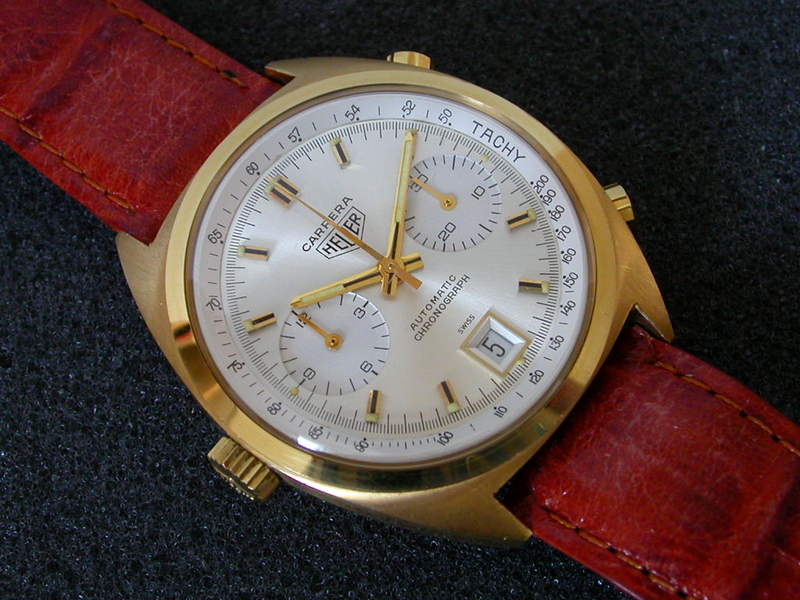| Informational Websites | ChronoMaddox -- the legacy of Chuck Maddox | OnTheDash -- vintage Heuer website | Zowie -- Omega information |
| Discussion Forums | ChronoMaddox Forum | Heuer Forum | Omega Forum |
| Counterfeit Watchers | ChronoTools Forum | ChronoTrader Forum |
|
|
The largest independent, non-commercial, consumer-oriented resource on the Internet for owners, collectors and enthusiasts of fine wristwatches. Online since 1998. | |||||||
|
||||||||
|
||||||||
 |
Vintage Heuer Discussion Forum
The place for discussing 1930-1985 Heuer wristwatches, chronographs and dash-mounted timepieces. Online since May 2003. | ||||||
| |||||||
| |||||||
As described in the previous responses, I believe that the rule of thumb is that the hands should match the markers. When we see black inserts in the markers, we shuold see the black inserts in the hands. Of course, there may be some exceptions, but this rule of thumb will help you spot the early hands used as replacement hands on the later watches, and the later hands used as replacement hands on the earlier watches. I believe that this rule is useful for the Carreras as well as the Autavias, and is also useful for other aspects of other hands, in addition to the black stripes (wide match wide / narrow match narrow).
Jeff
++++++++++++++++++++
: That's the key right there Ron. We see them on the late 60s manual
: output and crossing over into the early Chronomatic watches (and
: manuals in the equivalent case). On the first gen Carreras, for
: instance, we should only see them on second execution examples
: (the ones that also have inserts in the markers); anything
: earlier and the hands have been replaced at some point.
: They're particularly nice in gold, I reckon:
:
: 
| Chronocentric and zOwie site design and contents (c) Copyright 1998-2005, Derek Ziglar; Copyright 2005-2008, Jeffrey M. Stein. All rights reserved. Use of this web site constitutes acceptance of the terms of use. | CONTACT | TERMS OF USE | TRANSLATE |